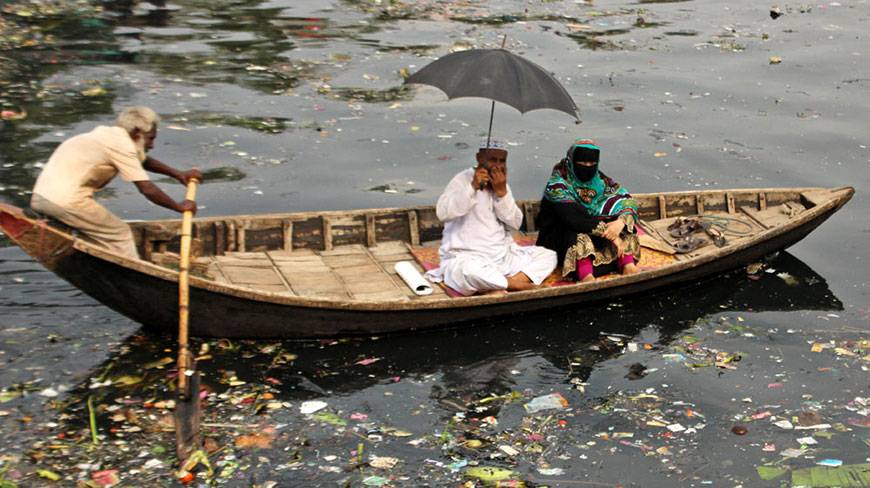A study conducted on the waters of the Buriganga River has revealed an inadequate presence of dissolved oxygen to support the existence of fish or other living organisms.
The survey, conducted yesterday by a group of specialists from Poribesh Bachao Andolon (Poba), collected water samples from different spots between Sadarghat and Pagla, and revealed that the presence of intoxicants in the water was higher than the level suitable for living organisms, according to UNB.
Water treatment plants were failing to purify the Buriganga River, and the water had lost all its aquatic life because rampant waste dumping, the study observed.
It also said the Pagla Water Treatment Plant processed only 50,000 cubic metres of the 13 lakh cubic metres of human waste created every day in the capital. The rest of the waste was dumped directly into the water, turning the river to a dead water body.
The Poba team tested the dissolved oxygen and acidity (ph) levels at different points on the river and found that the dissolved oxygen level was not high enough to support aquatic life.
In every litre of water, the dissolved oxygen should be minimum of 5mg; whilst the Buriganga waters did not exceed 0.62mg at eight places, said a press release of Poba.
The release added that the tanneries of Hazaribagh dumped 21,000 cubic meters of waste – containing chromium, lead, and sulfuric acid etc – in the Buriganga River every day, resulting in the pollution of the water, the riverbed and the soil on both banks.
Ninety thousand cubic meters of waste from textile and other factories are also dumped in the Buriganga River every day. Much is dumped directly into the river, as most factories ignore the mandatory use of treatment plants.
Poba urged people to be cautious and asked the authority to take steps to save the Buriganga from further pollution, the release added.
The dissolved oxygen (DO) levels were much lower than the permissible limit mentioned in the Environment Conservation Act 1997, while the presence of intoxicants was much higher than the permissible limit of the act.
According to Environment Conservation Act 1997, the permissible level of DO in water must be higher than 5mg per litre and the permissible limit of intoxicants must be around pH 7.
After examination of the water samples, it was found that the DO levels were between 0.21mg per litre and 0.55mg per litre.
The government also estimates that about 21,000 cubic metres of untreated industrial sewage is released into the Buriganga every day.
In a report published in October 2012, Human Rights Watch observed that residents in the slums near the river regularly suffered from fevers, skin diseases, respiratory problems, and diarrhea.
Source: Dhaka Tribune











Why doesn’t Hasina take a dip in the Buriganga every morning before going to the Mandir so that she can appreciate what is going on there. It’s really not all milk and honey as she would like the world to believe.